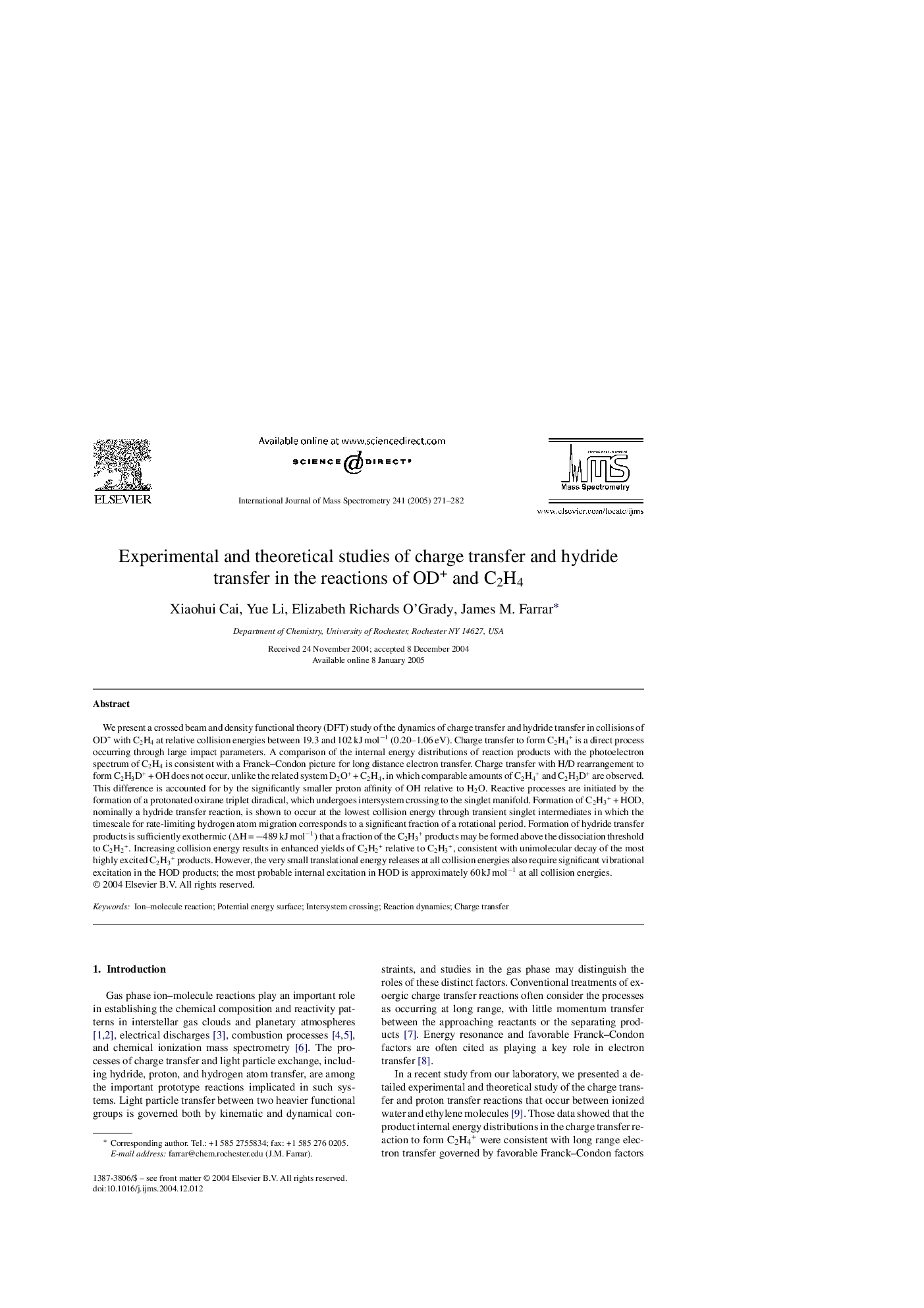| Article ID | Journal | Published Year | Pages | File Type |
|---|---|---|---|---|
| 9746764 | International Journal of Mass Spectrometry | 2005 | 12 Pages |
Abstract
We present a crossed beam and density functional theory (DFT) study of the dynamics of charge transfer and hydride transfer in collisions of OD+ with C2H4 at relative collision energies between 19.3 and 102Â kJÂ molâ1 (0.20-1.06Â eV). Charge transfer to form C2H4+ is a direct process occurring through large impact parameters. A comparison of the internal energy distributions of reaction products with the photoelectron spectrum of C2H4 is consistent with a Franck-Condon picture for long distance electron transfer. Charge transfer with H/D rearrangement to form C2H3D+Â +Â OH does not occur, unlike the related system D2O+Â +Â C2H4, in which comparable amounts of C2H4+ and C2H3D+ are observed. This difference is accounted for by the significantly smaller proton affinity of OH relative to H2O. Reactive processes are initiated by the formation of a protonated oxirane triplet diradical, which undergoes intersystem crossing to the singlet manifold. Formation of C2H3+Â +Â HOD, nominally a hydride transfer reaction, is shown to occur at the lowest collision energy through transient singlet intermediates in which the timescale for rate-limiting hydrogen atom migration corresponds to a significant fraction of a rotational period. Formation of hydride transfer products is sufficiently exothermic (ÎHÂ =Â â489Â kJÂ molâ1) that a fraction of the C2H3+ products may be formed above the dissociation threshold to C2H2+. Increasing collision energy results in enhanced yields of C2H2+ relative to C2H3+, consistent with unimolecular decay of the most highly excited C2H3+ products. However, the very small translational energy releases at all collision energies also require significant vibrational excitation in the HOD products; the most probable internal excitation in HOD is approximately 60Â kJÂ molâ1 at all collision energies.
Keywords
Related Topics
Physical Sciences and Engineering
Chemistry
Analytical Chemistry
Authors
Xiaohui Cai, Yue Li, Elizabeth Richards O'Grady, James M. Farrar,
